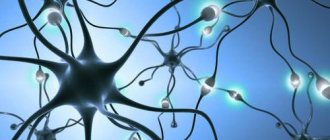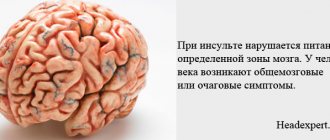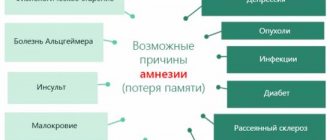Eidetic memory in psychology is the ability to remember and reproduce images and situations from life in detail. This type is otherwise called photographic memory or phenomenal visual memory. Many people would like to have it. However, not every person knows that in psychology there is still no consensus on whether eidetic memory is a norm or a deviation. Let's try to understand what eidetic memory is and how to develop it. Is it necessary to do this and what is eidetics?
Diagnostics
To find out how well a person's long-term memory is developed, various test methods are used.
Method No. 1. Memorizing words that are logically unrelated to each other
The bottom line. The subjects are given 2 lists of words (for children 6-12 years old one will be enough), which are logically unrelated to each other. Each of them is numbered.
Recommended Material:
Task options:
- Lists can be read aloud (without allowing subjects to write them down). If the words are read out, this must be done 2-3 times for adults and 4-5 times for children 6-12 years old.
- They can be written on the board.
- They can be distributed on separate pieces of paper to each subject.
Exercise:
- Listen/read the lists of words carefully and try to remember them.
- After listening/reading multiple times, try to reproduce it on paper. Preferably in the same order.
- Next, you need to be distracted by some other activity.
- After half an hour, the lists are read/listened to one more time and played again.
- The same thing is done twice more - the next day and a week later. The words are read/listened to again, but only once.
The results of all 4 tests are calculated using the following formula:
C (DVP coefficient) = B (number of correctly reproduced words): A (total number of words) x 100.
Next, the arithmetic mean of all 4 tests is found and based on the resulting result, conclusions are drawn:
Method No. 2. Memorizing text with semantic connections
The essence of the technique is almost the same. Only the text is not read aloud, but is distributed to each subject
At the same time, attention is drawn to the fact that the main thoughts are highlighted in bold, which must then be reproduced. That is, it is not necessary to memorize the sentences themselves and the entire text.
This technique is used to diagnose DVP in adolescents (13-17 years old) and adults.
Card with text:
You need to reproduce the main ideas of the text immediately after reading, then after half an hour, the next day and a week later. The results of all 4 tests are calculated using the formula:
C (DVP coefficient) = B (number of correctly reproduced thoughts): A (total number of highlights in the text) x 100.
Next, the arithmetic mean of all 4 tests is found and, based on the resulting result, conclusions are drawn according to the table above.
In case of serious impairments of long-term memory, laboratory diagnostic methods (EEG, CT, MRI, ultrasound) are performed.
You can train daily with exercises
Exercise 1. Take a photo of the object
Take some object, for example, a figurine, look at it for ten seconds, take a photo of it, then close the figurine and tell it or draw it from memory.
Check your story with the original figurine and compare whether you photographed everything or not.
Exercise 2: Take a photo of the painting
Take a picture, if there is no picture, you can take a picture in a book, look at it for ten seconds, take a photograph of it, then close the picture and tell from memory what is depicted in this picture.
Check your story with the original picture and compare whether you photographed everything or not.
Exercise 3: Take a photo of the carpet
Look at the carpet, if there is no carpet, you can take a picture of the carpet, look at it for ten seconds, take a photo of it, then turn away from the carpet and tell from memory what is depicted on this carpet.
Check your story with the original carpet and compare whether you photographed everything or not, compare the correctness of the description of patterns and colors.
Exercise 4: Take a photo of the formula
Take any complex mathematical or chemical formula.
Take a photo of it, then close this formula and try to write it from memory. Open the formula and check whether you wrote it correctly or not.
Exercise 5: Take a photo of a paragraph in a book
Take any paragraph in a book from five to ten lines, look at it carefully for thirty seconds, take a photograph of it, then close the book and tell from memory what is written in this paragraph.
Check your story with the paragraph in the book and compare whether you have photographed everything or not. Repeat the exercise again.
Exercise 6. Take a photo of a series of numbers
Take any series of numbers, look at it carefully for thirty seconds, take a photo of it, then cover it and write it down from memory. First memorize the first line and write it down, then memorize the second line and write it down, and so on.
9837564424237587977
34868708846241315756879
Check what you wrote and the written series of numbers and compare whether you photographed everything correctly or not. Repeat the exercise again to make sure there are no mistakes.
Exercise 7: Take a photo of the words
Take any words, look at them carefully for thirty seconds, take a photo of them, then cover the words and write from memory. First memorize the first two lines and write them, then memorize the second two lines and write it down, and so on.
Car, hare, raspberry, lungwort, pluto, ermine, bird cherry, turtle, sensor, universe, bear, ocean, formula, cinema, flora.
Dacha, garden, dinosaur, article, twenty-sided, mug, horns, money, picture, bed, rebus, engine, lark, carousel, dolphin.
Check what you have written and the words you have written and compare whether you have photographed everything correctly or not. Repeat the exercise again to make sure there are no mistakes.
Exercise 8. Take a photo of the matches
Take twenty matches and throw them on the table to make some kind of drawing, look carefully at the drawing from the matches that you get.
Take a photo of it, turn away from it and try to post it exactly the same as you took the photo.
Check these two pictures and see if they are different or not. If they are the same, then take thirty matches and do the same thing.
Visual memory impairment
Some children experience visual memory impairment. Problems with eidetic memory mainly occur due to damage to parts of the cerebral cortex on the occipital side.
It is this zone that is responsible for remembering photographic images. This happens with injuries or due to tumors of various etiologies.
What problems occur with visual memory?
Violations are manifested by the following symptoms:
- Disorders of visual perception of the environment
- There are times when children forget previously seen objects
- Another alarming symptomatology of pathology includes the following process: the patient is unable to name objects even though he recognizes them and understands their purpose.
Visual memory impairment
Short-term visual memory
Short-term memory is a short-term memory process, as a result of which you receive some information. It is also called working memory, it has a short period and limited volume.
With this type of memory, you can retain the memorized material of only four objects. It stores in memory cells small information that we currently consciously remember.
Short-term memory receives an amount of information from the senses, from long-term memory. The processes that occur in it are not stable and are reversible.
Short-term memory of visual images
Images in short-term memory exist due to the functioning of connections between neurons, through multiple passages of excitation along circular neural circuits. Retention of pictures occurs due to mental pronunciation.
How to develop eidetic memory: tips, exercises
In fact, most of us, although far from in its most vivid manifestation, already had an eidetic memory - in childhood - but over the years even these “rudiments” disappear. According to some scientists, we exchange this ability for the development of verbal skills and exchange photographic images for emotional ones.
Unfortunately, it is almost impossible to develop eidetic memory in the form in which it is characteristic of true eidetics, but through training you can significantly improve visual memory and the ability to reproduce memorized information.
, which will allow you to get at least a little closer to the owners of “super video memory”.
How to develop eidetic memory?
In order to develop eidetic memory, first of all it is necessary to make efforts (we want to warn you right away - significant efforts) to develop visual memory, and a very important condition is not only to see, but also to notice, as the great Sherlock Holmes bequeathed to us. This skill is useful not only for building logical chains, but also for developing memorization skills
Looking at pictures, objects, landscapes outside the window and in general at everything that surrounds you, try to notice every little thing, every detail
This skill is useful not only for building logical chains, but also for developing memorization skills. Looking at pictures, objects, landscapes outside the window and in general at everything that surrounds you, try to notice every little thing, every detail.
At first, this will happen only on a conscious level and require certain mental efforts on your part, but as your skills develop, it will move to the “unconscious” level - it will happen as if automatically (in fact, this is exactly how the legendary detective acquired his skills).
Remember the events of the past day, the movie you watched
and other phenomena seen. Some experts also advise remembering dreams, however, certain problems may arise with dreams: as a rule, we do not remember them completely, inconsistently, and in general, dreams are not always visual images.
For more information, see the article “Interesting facts about dreams.”
Training information reproduction
However, eidetic memory is not only about remembering, but also about recalling what you remember. Consequently, we must learn to recall not only what happened an hour ago or the day before, but also “the affairs of days long past.”
One of the exercises is to cling to some bright event and try to unwind the chain: what happened before, what during, what after
. Try to remember the details, restore the picture and sequence of events as if you were there again. The further you continue your training, the less significant the “starting” point may be for you.
Try for yourself various mnemonics (for example, the mnemonics we presented for memorizing numbers) - having moved to the same automatic level, they will help you consolidate this or that information for a long time.
The general development of memory will also be very useful.
(not only visual), as well as general training of brain activity - neurobics, learning languages, solving logic puzzles and even crosswords: don’t let your brain idle, and it will show you what you are capable of.
Courses for the development of intelligence
In addition to games, we have interesting courses that will perfectly pump up your brain and improve your intelligence, memory, thinking, and concentration:
Development of memory and attention in a child 5-10 years old
The purpose of the course: to develop the child’s memory and attention so that it is easier for him to study at school, so that he can remember better.
After completing the course, the child will be able to:
- 2-5 times better to remember texts, faces, numbers, words
- Learn to remember for a longer period of time
- The speed of recalling the necessary information will increase
Secrets of brain fitness, training memory, attention, thinking, counting
If you want to speed up your brain, improve its functioning, improve your memory, attention, concentration, develop more creativity, perform exciting exercises, train in a playful way and solve interesting problems, then sign up! 30 days of powerful brain fitness are guaranteed to you:)
Super memory in 30 days
As soon as you sign up for this course, you will begin a powerful 30-day training in the development of super-memory and brain pumping.
Within 30 days after subscribing, you will receive interesting exercises and educational games in your email that you can apply in your life.
We will learn to remember everything that may be needed in work or personal life: learn to remember texts, sequences of words, numbers, images, events that happened during the day, week, month, and even road maps.
Money and the Millionaire Mindset
Why are there problems with money? In this course we will answer this question in detail, look deep into the problem, and consider our relationship with money from psychological, economic and emotional points of view. From the course you will learn what you need to do to solve all your financial problems, start saving money and invest it in the future.
Speed reading in 30 days
Would you like to quickly read books, articles, newsletters, etc. that interest you? If your answer is “yes,” then our course will help you develop speed reading and synchronize both hemispheres of the brain.
With synchronized, joint work of both hemispheres, the brain begins to work many times faster, which opens up much more possibilities. Attention
,
concentration
,
speed of perception
are enhanced many times over! Using the speed reading techniques from our course, you can kill two birds with one stone:
- Learn to read very quickly
- Improve attention and concentration, as they are extremely important when reading quickly
- Read a book a day and finish your work faster
We speed up mental arithmetic, NOT mental arithmetic
Secret and popular techniques and life hacks, suitable even for a child. From the course you will not only learn dozens of techniques for simplified and quick multiplication, addition, multiplication, division, and calculating percentages, but you will also practice them in special tasks and educational games! Mental arithmetic also requires a lot of attention and concentration, which are actively trained when solving interesting problems.
Training and development
From two to five years of age, a child has a fertile period for improving mechanical memory. During this period of time, it is necessary to read good children's poems to him and teach them together.
Important! You can improve your mechanical memory by mastering foreign languages and memorizing poetic texts. You need to memorize formulas and scientific terms, historical dates and statistical data, product lists, telephone numbers and addresses, geographical names, numbers, first names and patronymics
Scientists have proven that a person forgets the most information in the first 2 hours after cramming. If you study before bed, much less material will be erased from memory, since during the night's rest it moves from short-term to long-term memory and is then easier to reproduce.
Mechanical memory, according to experts, is the basis for successful learning.
Interest in studying
Exercises for children
- Cascade. An adult reads a list of words. If the child repeats easily, the list increases by one more.
- The parent slowly sounds out 10 words. Children draw them with their fingers on the table, then remember them.
- The child carefully examines the surroundings, then turns away and lists the objects.
- An adult draws a simple composition of figures or a pattern on a sheet of paper. Children watch for one minute, then reproduce it from memory in their notebooks.
- Several different objects or pictures are placed on the table surface. The child looks carefully, then turns away. An adult changes something in the position or completely confuses it. The children's task is to put everything in its place.
- The teacher reads the words, inviting the children to illustrate them using poses, sounds or gestures, then the children try to remember the list.
Repeat text
For an adult, working with text memorization will help increase the volume of mechanical memory. To begin with, you can choose a short passage and try to retell it. Over time, you need to repeat the entire passage, then take 2 texts, increasing the number of characters.
Remembering names
The volume of a person's short-term memory is strongly related to mechanical capabilities. The name of the person just introduced is forgotten because the communication process replaces old information in short-term memory with new information. To remember the name of a friend, you need to pronounce it loudly and clearly, think about how it is similar to its owner.
You can develop mechanical memory more effectively if you follow simple rules:
- Do not take too much information at once, learn in parts;
- Repeat the material at regular intervals;
- Use mnemonics;
- After an hour of work, rest for 15 minutes;
- Diversify the material.
Manifestations
Psychologists compare memory in different people with fingerprints, arguing that it is formed and develops completely differently in each person. This is due to their individual characteristics.
Leading mental activity
First of all, personal manifestations of memory are determined by the nature of the leading mental activity, which has already been mentioned above.
Example. One driving training group included a kinesthetic, visual and auditory learner. The topic of the lesson is “How to cope with uncontrolled skidding on the road.” To learn (remember) the material that the teacher explains:
- a kinesthetic learner must get behind the wheel himself (at least in a training simulator) and repeat the algorithm of actions in a given situation with his own hands;
- Visual material is enough for the visual: a poster or video; recording the material will also be very useful;
- The auditor may not write anything down or even look at the board - he remembers the material with the help of his hearing.
Knowing his leading type of mental activity, a person can improve and speed up the memorization process several times. For this, a kinesthetic learner needs to touch everything, a visual learner needs to see, and an auditory learner needs to hear.
Memory quality
Depending on the degree of development of mental functions, each person’s memory will differ in quality. Everyone knows that it can be phenomenal, wonderful, mediocre and even bad.
It is considered good if it is characterized by such parameters as:
- high speed of memorization;
- long-term storage of information;
- accurate reproduction down to the smallest detail;
- readiness to recreate synaptic and neural connections for rapid reproduction.
All these parameters can be combined with each other in different ways, which also leads to either good memory quality or problems with it. For example:
- the most successful combination - high speed of memorization + slow forgetting;
- mediocre tandem - low speed of memorization + slow forgetting;
- partially successful combination - high speed of memorization + rapid forgetting;
- the lowest productivity of the couple is low speed of memorization + rapid forgetting.
Personality manifestations often include memory capacity. On the one hand, it really is not the same for different people. Some of the 20 dictated words can remember only 5, while others can accurately reproduce them all. However, psychologists say that this parameter is the same for everyone. It’s just that someone knows how to use the maximum of the provided volume, regularly training and developing their memory. Others do not consider it necessary to spend time on this, and as a result, they later complain that theirs is bad.
Degrees of eidetic memory
The development of eidetic memory goes through five stages:
- Reproduction from memory is possible only with the image fixed.
- Reproduction of images without additional fastening, but this only applies to weak images.
- Reproducing more vivid images and details.
- Involuntary memorization of important images with their further clear reproduction. At this stage, tactile, auditory, taste, and motor memories (sensory modalities) appear.
- The highest degree, in which a person remembers everything in detail and very vividly, feels all the events of the past as in the present.
In the latter case, it is customary to distinguish two more types of memory: B and T. The first group includes those memories that a person controls and calls up from the depths of memory. Images from group T are not amenable to personal control; they emerge chaotically anywhere and at any time.
Interesting! Group T memories sometimes turn into hallucinations.
How memory works
We take memory for granted, but scientists are still studying the human brain and are amazed at its capabilities, including memory.
Without the ability to remember, we would not be human, because our personality is a collection of memories and conclusions drawn from them.
From a scientific point of view, memory is information encoded in the brain in the form of signals transmitted and changed between neurons. This is a complex process involving billions of neurons, each part of the brain responsible for a specific type of memory.
The parietal cortex of the brain is responsible for musical abilities; when a person needs to play an instrument, this area is involved. The hippocampus is responsible for new memories. If it is removed, then the person will remember the past, but will not be able to remember new information, it will simply be instantly forgotten.
The localization of memory has not been precisely proven, but the hypothesis that each area is responsible for its own type of memory remains relevant.
There is a procedural memory, it is not connected with the hippocampus, so it is impossible to unlearn how to ride a bicycle, run, walk, or swim if it is removed.
Scientists cannot say exactly how long-term memory works; the exact mechanisms of memorizing information and storing it have not been studied. There are only guesses and assumptions. But a memorization algorithm has been identified that works on all healthy people:
- the process of capturing information;
- retention in the brain;
- reproduction;
- forgetting.
People tend to quickly forget information that is not valuable and is not relevant. This rational use of neural networks allows us not to think about everything we know, giving us the opportunity to focus on new knowledge.
Phenomenal memory is also not fully understood. People with this ability can extremely quickly process new information in their brain and store it, when a person with ordinary memory quickly forgets random data that is not supported by meaning, emotions, etc.
People with phenomenal memory can look at a piece of paper with random notes on numbers, words, dates, facts and remember them by heart in a few seconds, and then voice what they saw exactly. This is amazing and opens up new boundaries of human capabilities.
Examples of eidetic memory
Wolfgang Amadeus Mozart had a phenomenal memory. At the age of three, he memorized what his father and sister played, and then reproduced it with precision. There is also a famous case when Mozart was in the Sistine Chapel and memorized a very complex piece. When he got home, he wrote it down. The original sheet music for this piece was kept in a secret place. Upon further comparison of Mozart's recordings and the original, their complete coincidence was established.
What is vivid figurative memory?
Vivid figurative memory is called eidetic. It is of an emotional nature. Preschoolers have this type of memorization. They can easily describe a friend’s favorite toy when it is no longer in sight, because the vivid image is imprinted in the brain and is of interest to them.
When reciting a long poem by heart, schoolchildren's eyes move as if a book with it was open in front of them. Their mind's eye actually sees the pages of the book where this poem is written. While telling it, they “see” all the drawings that were on this spread of the book.
Children gradually lose their eidetic ability when they enter school. Having mastered other methods of memorization, they less often turn to eidetics. It is replaced by abstract thinking.
Additional Information. Eidetic memorization is based on primary visual perception. It fully corresponds to the physiological development of preschool children and their inherent visual-figurative thinking. From the moment children enter school, verbal and logical thinking begins to actively develop, they learn definitions, rules, and draw conclusions, so eidetics and visual images give way to practical actions, logic and associative memorization.
How to quickly develop photographic memory
In order to develop a photographic memory and develop it, at least to the level of the famous Sherlock Holmes, great efforts must be made. Learn not just to see the picture, but train to notice the smallest details. Concentrated looking at surrounding objects, taking into account little things on a conscious level, is the first step towards developing super memory. Training and development of memory at the initial stage will take place consciously; after a certain period of time, such learning will smoothly move to an unconscious level.
Studying and reproducing the past day or the movie watched in the smallest detail with the correct sequence should be done in the mind every day - this will help develop this type of memory faster. A detailed analysis of paintings or images by carefully studying the details for 30 seconds should be a systematic habit and a common occurrence at the very beginning of training. It is advisable to reduce the study interval after each successful time.
How to develop photographic memory - exercises
Training photographic memory is the work of the brain; it should not stand idle. A common activity for people who want to develop their memory should be solving crosswords, puzzles, logical problems, learning foreign languages - neurobics classes. The genius Leonardo da Vinci developed his abilities by studying walls with splashes of paint, but modern methods suggest starting exercises with elementary memorization tasks that will help develop the inherent inclinations of editism:
Select a paragraph in a book and try to study it without reading from beginning to end - but capture the entire text, as if on camera film, to understand the meaning of the information presented. You need to start with small tasks
Be sure to test your skills on paper; a clear example will show missed points. Training on numbers is carried out in the same way - you need to ask someone to write down a row or column with numbers and show them for a few seconds, write down what you remember on a piece of paper and compare it with the original recording. Studying formulas will help develop the necessary abilities - mathematics, physics or chemistry, no matter what subject the training will be in, maximum 20 seconds. viewing and checking the memorized material on a piece of paper with a recording.
Games to develop photographic memory
Games to develop photographic memory - help train the right hemisphere of the brain. Tasks that develop photographic memory at any age:
- Read backwards. You should start with simple words, then practice on word combinations and phrases.
- Eavesdrop on someone else's conversation. While in a public place, you need to catch a fragment of someone else’s conversation, then reproduce all the words and intonation you heard - portray someone else’s emotions.
- Make associations - compare objects and furnishings with familiar and standard things.
- Studying poetry is good for developing memory.
- Reading aloud with intonation and accents; the text should not sound monotonous; it should convey thoughts and experiences.
- Throwing matches - randomly throw matches on the table or floor, turn away and reproduce the same arrangement.
Is it possible to develop the ability, and in what ways?
Figurative memory plays a role in the development of intelligence, and it also allows you to avoid dangers. That is, it refers to existential abilities. The study of figurative memory has shown that it lends itself well to development in a fairly short time. The shortest path to developing a lasting ability is to immerse yourself in an area where one or another type of ability prevails. Play a musical instrument, draw, learn to cook, try different foods and their combinations, touch objects and then reproduce their characteristics in the mental area, and the like. There is another equally effective, but somewhat more routine way - special exercises.
Write down about 10-20 words
They should not be connected to each other in any way. They are chosen randomly, the first thing that comes to mind. It is advisable to have an assistant write, because it is possible for some connections to be formed in the brain and the person, even while writing, will remember some of the words, which should not happen. Then the sheet with random words is removed. You need to reproduce as many memorized words as possible. You can use not only nouns, but also verbs and adjectives to complicate the task. The use of mnemonic techniques and associations is possible. But if the goal is to develop photographic memory, it is contraindicated. You need to clearly visualize the word sheet or board.
Listen to the melody
Then sing it or play it on an instrument, observing the rhythmic features. Musical dictations are considered an irreplaceable way to develop auditory skills. In simpler cases, you can memorize people’s conversations, the timbre of their voice, and then reproduce fragments mentally.
Visit flower and perfume shops
The ability to distinguish individual odors requires some skill.
Taste and tactility develop through experience. There are no special exercises. It is required to gain experience by feeling objects, tasting dishes, food, and recording taste characteristics. An experimental technique, preferably with immersion, is considered the main one.
It takes several weeks for figurative memory to develop. However, there is no limit to perfection. The process continues throughout life if necessary. A high level with systematic exercise of 30-60 minutes a day can be achieved within a month, give or take. Depends on the characteristics of the higher nervous activity of a particular carrier.
Steps
Part 1
Lifestyle changes
- Fight depression.
Many people who suffer from depression describe memory loss and difficulty concentrating as one of their main symptoms. Anxiety, depression, anger and other stress-inducing conditions increase cortisol levels in the brain, which can damage cells in the hippocampus, the region of the brain responsible for storing memory.
Keep your brain active.
Just like your muscles, your brain works better the more you exercise it. Unfortunately, many people are so overwhelmed by everyday problems that they spend days on end using their brains on autopilot mode. Try incorporating some of the following brain-activating activities into your week:
- Solve crosswords,
- Read books (preferably non-fiction),
- Read the newspapers
- Play board games
- Learn a new language or instrument,
- Sign up for a course at your local college.
- Exercise more.
Physical activity increases blood flow to every part of your body, including your brain. This can give your brain more oxygen and essential nutrients promoting better brain function. Aim for at least 30 minutes of aerobic exercise five days a week.
- It's important to space your exercise throughout the week to ensure a regular increase in blood flow to the brain. Even if you don't have time for a formal warm-up, everyone has time for a ten-minute relaxed walk.
To increase your mobility, make small changes to your lifestyle, such as using the stairs instead of the elevator.
Excessive alcohol consumption can block key brain receptors that are needed for memory retention, and can also release steroids, which affects learning and memory. However, there is some evidence that drinking alcohol in moderation may actually protect your memory in the long term. One French study found that people over 65 who drank moderately (1 to 2 glasses of wine per day) were less likely to develop Alzheimer's disease.
Part 2
Memory Improvement Strategies
- Minimize distractions.
For many people, forgetting is not a memory problem, but the result of an inability to remember information initially due to excessive distraction. Whenever possible, try not to multitask and instead focus all your attention on completing one task at a time. While it's tempting from a time-saving perspective to do multiple things at once, you're more likely to remember information if you do each task individually, which will save you time in the long run.
One way to help you remember something, be it the name of a book or the place where you left your keys, is to spend a few seconds visualizing it. For example, if the object is a book titled "A Thousand Splendid Suns," take a minute to visualize the image of a thousand splendid suns. Saving the image in your memory can help you remember the title of the book later.
- Likewise, if you place your car keys on the kitchen table, try to imagine your keys doing something silly in the kitchen, like cooking or eating fruit from a fruit bowl. When it comes time to look for your keys later, you are unlikely to forget the stupid scene you created in your head.
Even after only 30 seconds, many people find it difficult to remember the names of people they just met. This is likely because we tend to focus so much on ourselves (how we look, whether we are polite, etc.) that we ignore the perception of the other person's name. This can be especially difficult if you are introducing yourself to multiple people at once.
- One way to combat this phenomenon is to repeat the person's name right after the meeting: "It was nice to meet you, and the name." If you didn't hear the name properly or didn't understand how to pronounce it, be sure to clarify that right away to avoid having to ask again later.
Another way to remember names is to associate a new name with someone you know who has the same name. If by this time you don't know anyone with the same name, try to remember a character from a book or movie with the same name. Making such associations can help you remember the name later.
Chunking is a psychological term for a memory retention technique, the meaning of which is to group numbers, words or objects contained in a sheet for the purpose of remembering them.
- If you are trying to remember items on a grocery list, then try to group them into different categories like fruits, vegetables, frozen goods, condiments, meats, and so on. Alternatively, divide the grocery list with a potential dish in mind; for example, you could group lettuce, tomato, cucumbers, goat cheese, and vinegar into one category called “salad ingredients.”
The same can be done by dividing sets of numbers into smaller sections; This will come in handy when trying to remember your credit card number, social security number, or phone number. For example, instead of trying to remember the following sequence: 77896526, you could break it down into 77-896-526. Repeating a number to yourself will be much easier if you do it in small sections.
- Many people are concerned about memory loss when, in fact, they did not properly absorb the original information because they were too distracted while studying. Remember that just because you saw or heard something once does not necessarily mean that you focused well enough to permanently retain that information in your memory. The best way to combat this is to be completely focused when learning new information.
- If you suffer from severe anxiety or depression, talk to your doctor before attempting to self-diagnose or self-medicate.
The human brain is a real perfect “machine”, which cannot be compared with any mechanism on earth! Every day we remember a lot of information that is useful to us. Later, something is erased from the memories, unnecessary details are eliminated. And indeed, if such a process did not occur, our brain would simply be filled with a mass of information that we absolutely do not need. But what about the moments that evoke pleasant memories? You've probably noticed that we remember them all our lives. Unfortunately, this also applies to negative shocks.
So, this memorization mechanism is quite explainable - we clearly remember what caused strong emotions. Many people dream of developing photographic memory, not even suspecting that you already have it, you just need to train it. An emotion works as a real stimulant - that is, there was an experience of any kind and what is called simply imprinted in memory. And to
How to develop photographic memory consciously? After all, such an ability provides many new opportunities, both in everyday life and in a career.
The human brain is ready to solve any given problem. More training means better results.
Stages
Coding
Unlike short-term, human long-term memory does not imply any specific type of representation of verbal material. This means that coding here is neither visual nor auditory. It is based on elements, the main one being meaning. Because of this, information retained and later reproduced is rarely 100% accurate.
Playback
A person cannot reproduce information from the KVP because it fades away or is replaced by new images. In long-term memory this is excluded. Everything that a person consciously remembers remains in storage for life. The question here is quite logical: why then can’t we remember some events from the past? And what about those who experience failures?
Here it is appropriate to compare a warehouse of information with a huge library of a million books. Those shelves that we often access are always at hand, so the material from them can be easily and quickly reproduced. But if you ask an older person whose field of activity does not intersect with mathematics what Newton’s binomial formula looks like, which he studied in the 10th grade algebra course, he is unlikely to remember, although he memorized it during his school years. It is in the storage of his memory, but it is too far away, and he is unlikely to find it without repeating it.
In psychology, the reproduction of information in long-term memory can go in two ways - through its search and activation.
Famous people with eidetic memory
History knows many examples of people with innate or acquired eidetic memory. Here are just a few of them:
- T. Roosevelt. Every day I trained my memory and read three books.
- N. Tesla. Since childhood, he had a phenomenal memory.
- John Paul II. Knew 21 languages and 100 dialects.
- Kim Peak. A simple, but at the same time unusual resident of America. Kim read two pages in parallel and immediately remembered what he read.
- Ferdinand Marcos. He memorized, reproduced or retold text of any complexity and volume.
- Julius Caesar. He had an excellent memory for faces and knew all the soldiers.
- Meryl Henner. Another ordinary, but unique American resident who remembered her entire childhood in detail.
- Mary Elizabeth Bowser. A legendary intelligence officer who memorized and accurately conveyed all the information she learned.











